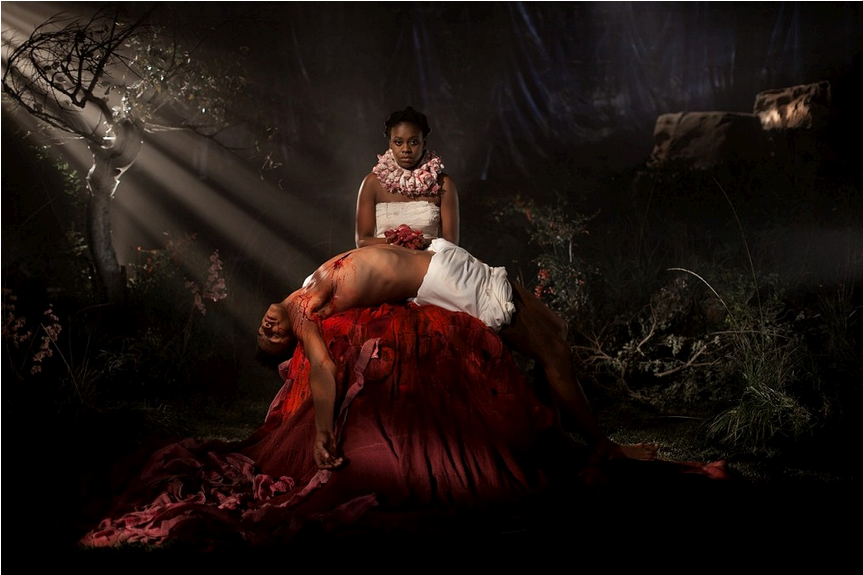Kudzanai Chiurai
Moyo
22 de Marzo 2018 - 05 de Mayo 2018
Biography
Internationally acclaimed artist Kudzanai Chiurai (1981 Harare, Zimbabwe) is part of what some have labelled the “Born-Free generation,” having been born a year after the emergence of Zimbabwe from white-ruled Rhodesia. He was the first black student to graduate with BA in fine arts from the South African University of Pretoria in 2005 and has become an essential figure within the contemporary African art scene.
He started his career painting landscapes and portraits. In 2008 he stirred up controversy with a series of controversial depictions of Zimbabwe’s then president Robert Mugabe, during the violent and disputed elections of that same year. Since then, he has incorporated a diverse range of media, mixing digital photography, editing and printing, as well as film. He has become renown for dramatic multimedia compositions that address pressing political and social issues such as the aftermath of colonial history, power and corruption, public acts of violence and mourning. He lived and worked in South Africa since 1999 and has only recently returned to Zimbabwe.
Exhibitions
Since 2003, Chiurai has had numerous solo exhibitions and has participated in international shows such as Figures & Fictions: Contemporary South African Photography at the Victoria & Albert Museum in London, Impressions from South Africa, 1965 to Now in New York’s MoMA, after which the museum acquired Chiurai’s work for their collection; and Making Africa: A Continent of Contemporary Design at the Vitra Design Museum in Weil am Rhein and Guggenheim Bilbao. In 2012, his Conflict Resolution series was included in dOCUMENTA 13 and, in 2013, his film Iyeza was selected for the New Frontiers shorts programme of the Sundance Film Festival.
In late 2017 he held his first solo exhibition in his country of birth, We Need New Names, organized by Zimbabwe’s National Gallery. The title is a reference to the debut novel of Zimbabwean author NoViolet Bulawo, his contemporary as well as the first black African woman and first Zimbabwean to be shortlisted for the Man Booker Prize. That same year Chiurai’s work could be seen in We Live in Silence, a dual exhibition displayed simultaneously in Goodman Gallery and Constitution Hill. We Live in Silence builds on Mauritanian filmmaker Med Hondo’s critically acclaimed 1967 drama Soleil Ô as a starting point for an exploration into the intricacies of colonialism and its effects on African nations.
Moyo
Moyo (2013) is the title of the third video of a series, preceded by Iyeza and Creation. A series that references ritual practices of war, purification and burial. The title, Moyo, means “air” and is an allusion to the moment of death when the air, the last breath, the spirit, leaves the body.
In the film and photographs (Moyo I, II and III) that compose the piece, Chiurai offers different variations of a pyramidal composition where one figure mourns another. This is an iconic composition, which we have seen in Goya’s Disasters of War and Michelangelo’s Pietá, as well as other more recent depictions of tragic events. This combination of art historical references and pristine digital media to address public acts of violence, a real issue of personal relevance for him, creates poignant works that engage us. Chiurai is asking relevant questions regarding the nature of violence and their depiction in the steady stream images that surrounds us. Public violence is constantly there and Chiurai does not look away. In his own words, “I am just reminding people of this. Some people do this as journalists; I do it with paintings and drawings and film.”
Moyo I, the photograph exhibited in Marta Moriarty, is one of striking and unsettling beauty. A female figure mourning a male body looks directly at the spectator. She has been witness to something terrible and her gaze beams straight out towards us and, in turn, makes us witnesses of both of the effects of the violence perpetrated on the body on her lap and of her own mourning. The image sears our retinas and we cannot look away either. His questions become our questions. What is the nature of these public acts of violence? How are they mourned publically? What happens afterwards? How are they represented?
